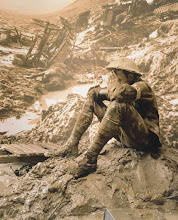Your team tried to crush you today, break your every limb. Yet only one of you had the necessary retzach b’ainayim, that killer’s look in the eyes. And so the rest of you have nothing to show from your work here.
Two weeks of exhaustive krav maga drills came to a close with the instructor dismissing the painfully mastered technique as a waste of time. My team had just fought each other in staged battles pitting each individual against everyone else, one at a time, in thirty second bouts. These kravot, literally battles, had seen even the best guys become little more than moaning punching bags after a few minutes of ceaseless action. And now, according to the coach, it was all for naught. “Krav maga is not about form,” summed up the instructor. “The point is aggression- focused, ceaseless aggression.”
Krav maga, literally ‘contact combat,’ may not be at the forefront of Israeli public relations advocacy. Yet the no-holds barred defensive combat system is one of modern Israel’s most well known exports. And just like the hi-tech exports whose success is due in no small part to their roots in the Israeli defense community (read Start Up Nation for the whole story), krav maga has deep ties to the IDF. Developed by a Czech Jew in the 1930s in response to Nazi aggression, krav maga was fine tuned over the ensuing decades in the IDF. Today many special forces and law enforcement agencies the world over turn to the Israeli product for training. The rules, or lack thereof, are straightforward: counter-attack as quickly and aggressively as possible, with maximum force at your opponent’s most vulnerable points. Do not stop until the threat is over or an opportunity to escape presents itself.
I was first introduced to krav maga in basic training. Instructors from the Nachal Brigade (including a memorable Russian fellow) took full advantage of the opportunity to work with special force troops. The kadar, army slang for pointless intensive physical activity (kadar is shorthand for Klitah Derekh Reglayim, ‘absorption through the legs’!) was unrelenting. And the discipline was total. Nowhere else in the modern army are commanders allowed to leave soldiers in matzav shtayim (push-up positions) for painfully long periods of time. During krav maga sessions, soldiers are put in stress positions like matzav shtayim for the slightest diversion from the rules. Scratch your nose and boom, your entire squad will immediately be running suicide sprints.
The kadar and discipline remained the rule for krav maga sessions in tironut yechida (the two month stretch that bridged the gap between basic and advanced training). What was new is that sessions were now sprung on us in the middle of the night, waking us from sleep with seven minutes to dress and ready ourselves for the violence to come.
Krav maga sessions in advanced training have finally become about technique. That is, after ensuring that we are physically exhausted from endless sprints and push-ups, instructors introduce basic combat moves. Learning to punch, kick and disembowel the enemy comes at great cost however: blows are practiced on each other. All the padding in the world does little good when my job is to stand still and let my friends, riled up to imagine me as a horrible terrorist, let loose on me from a foot away.
Kravot, the draining bouts mentioned above, are normally used to close out a week of krav maga training. As exhaustive as they are—unless you have had to box twenty guys in a row, each one coming at you fresh and determined to prove a point, you can’t imagine it—they do not touch the ferocity and fatigue of the gauntlet. Native Americans are said to have made captives run through two lines of their warriors, raining blows until the unfortunate souls collapsed. We do more or less the same thing, except our peers fill us in from both sides while a meaty instructor pulls us backwards and another holds a punching bag in front of us. The guy in the middle has to surge forward, ignoring the pain and fists, and keep boxing the stuffing out of the bag. Several guys on my team went down under the incoming blows. But everyone got back, tapped his angry inner animal, and surged on to the end.
Saturday, July 10, 2010
Subscribe to:
Post Comments (Atom)




No comments:
Post a Comment